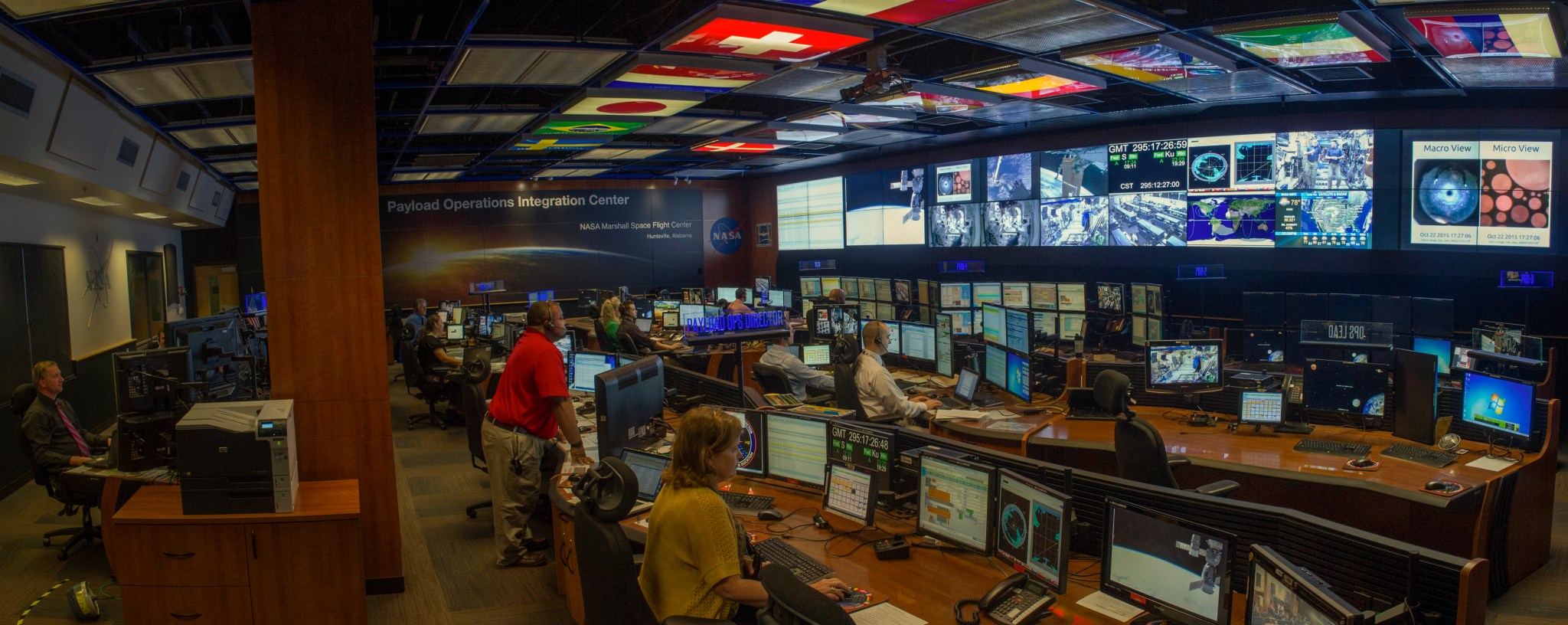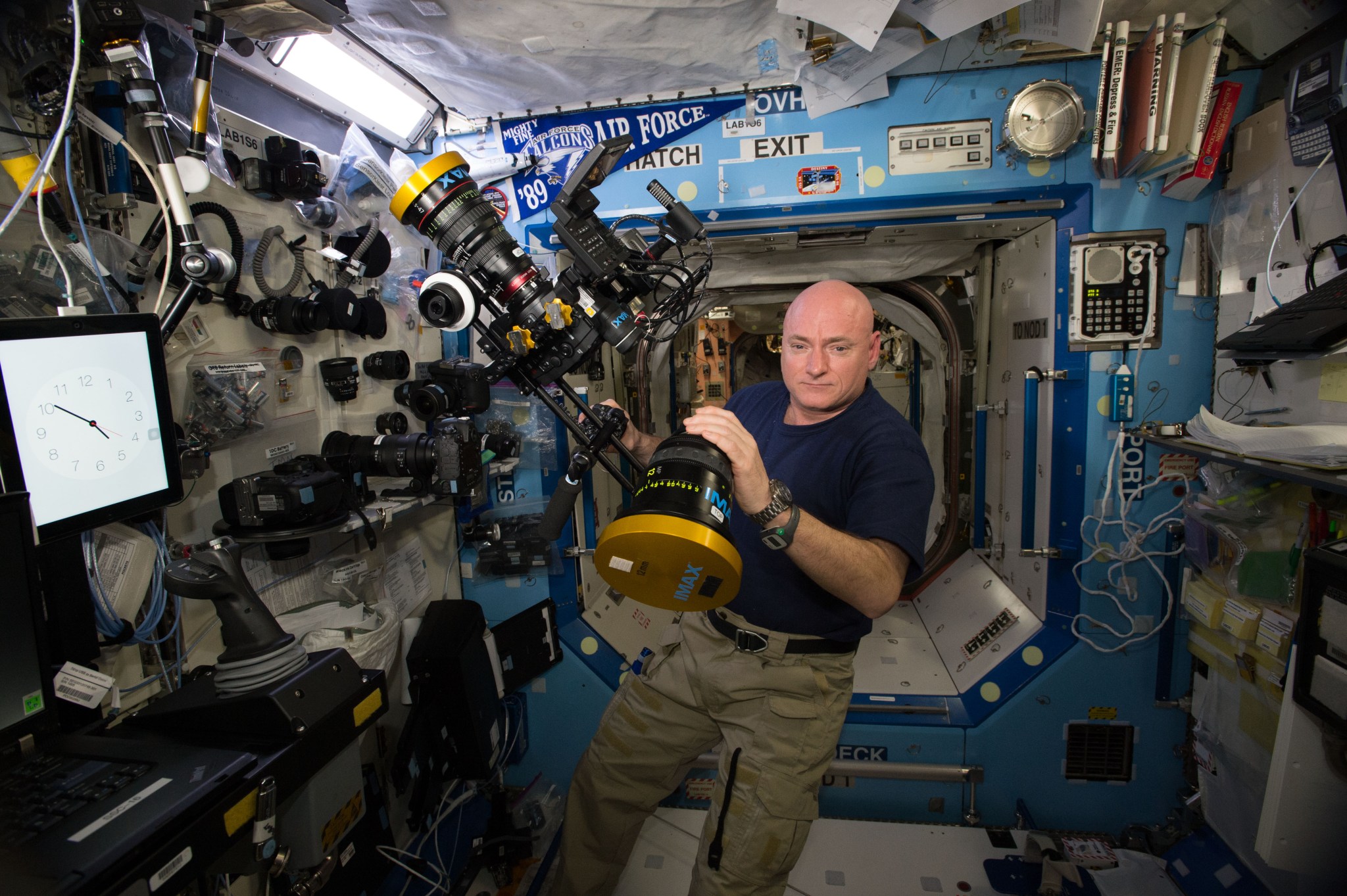Astronauts conduct science on the International Space Station to bring benefits home to Earth and prepare the world for space missions. Space travelers usually spend about six months on the world’s most sophisticated orbiting laboratory.
When people explore Mars or travel even farther away, the journey will take much longer. That’s why NASA astronaut Scott Kelly and Russian cosmonaut Mikhail Kornienko of Roscosmos have spent a year in space. Flight controllers at the space station science command post — the Payload Operations Integration Center at NASA’s Marshall Space Flight Center in Huntsville, Alabama — worked with Kelly or various crewmembers to complete almost 400 experiments since Kelly arrived at the station on March 27, 2015. Kelly’s year in space is providing crucial knowledge needed to send humans safely to deep space on upcoming Space Launch System and Orion missions and for the journey to Mars on missions 30 months or longer.
Kelly — who spent more time in space on a single mission than any American astronaut — and Kornienko conducted studies and endured a battery of biomedical tests to determine what happens to the human body while spending an extended period in space. Marshall Center flight controllers worked around the clock with Kelly and Kornienko as they orbited Earth 5,440 times traveling 143,846,525 statute miles.
In many respects, this yearlong expedition was just another day at the office for Becky Grimaldi, one of the payload operations directors who help manage and guide the ground-based support team.
“We meticulously plan all space station experiments,” said Grimaldi. “So we treated that part of the process the same. There is a learning curve for any crew, and Kelly and Kornienko just got better at doing things, becoming more proficient at various tasks as time passed. This was beneficial.”
During the mission, payload communicators, or PAYCOMS, get to know station residents quite well because they talk to the crew almost every day, relaying information from investigators and flight controllers. PAYCOM Samantha Harris said working with an individual astronaut for a long period allowed for candid conversations about payloads and investigations.
“Astronauts face challenges living in space for extended durations,” Harris said. “This past year is the first time I started understanding and getting really excited about the space station’s role as a stepping-stone to Mars — paying extra attention to issues that are going to impact our crews on longer missions, and taking notes about ways we can improve the design of future space operations, and even space laboratories and habitats, to maximize comfort and efficiency.”
One investigation is helping determine the qualities of a good laboratory and living space from the perspective of the people who use it every day: the crew members. The Habitability investigation records observations from the crew to help design better habitats for future missions.
Another investigation sent back stunning science videos and images of Earth from a new Ultra-High Definition, or 4K camera, that Kelly and his crewmates were the first to use. One of the more difficult human research investigations measured fluid shifts and is critical to the journey to Mars.
“I am proud of successfully completing the first Fluid Shifts investigation,” said Grimaldi. “It involved coordination between NASA, ESA (European Space Agency) and our Russian counterparts. Understanding how vision is influenced by fluids moving inside the body is crucial to human spaceflight as is international cooperation on investigations and missions.”
Despite not leaving Earth, the personnel in the Payload Operations Integration Center are a valuable part of the team.
“It has been an honor to be a part of this experience,” said Harris. “We completed so much valuable science, and while we know it will take time for data to be analyzed and understood, we’re looking forward to some of the new discoveries as a result of the data Scott Kelly and his Russian partner collected.”
Ten Things to Know About Scott Kelly’s #YearInSpace: https://www.nasa.gov/mission_pages/station/research/news/top_ten_1YM
NASA Astronaut Scott Kelly Reflects on His Year In Space: https://www.nasa.gov/

























